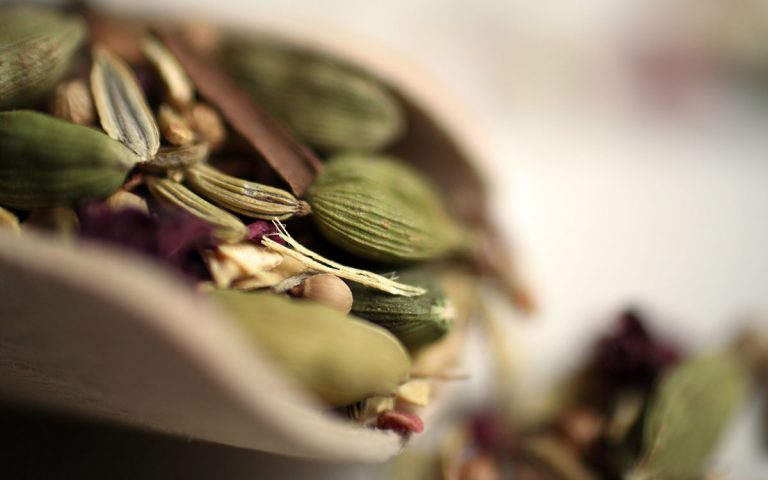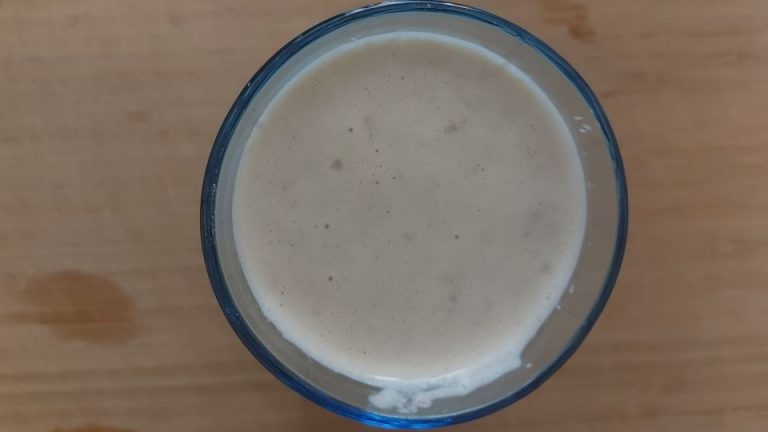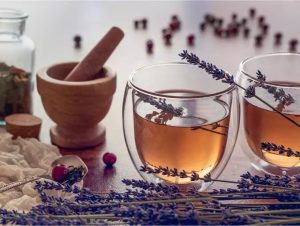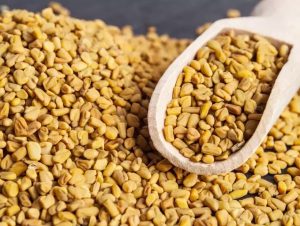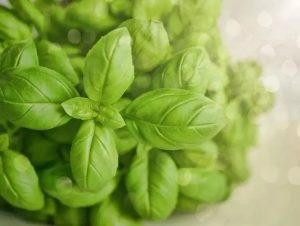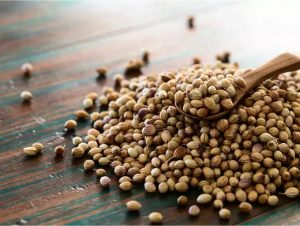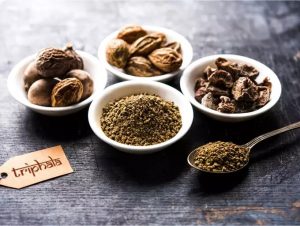If there’s one thing you shouldn’t neglect even amidst your busy schedule, it’s your health. And eating healthy food, undoubtedly, is one of the best ways to keep your body strong and protected.
Why is healthy food good for you? Well, that’s because these are real foods that are overflowing with beneficial nutrients that are good for your body. And don’t worry! A healthy balanced diet doesn’t mean you’ll be eating flavorless foods.
With that said, here’s a list of nutritious food that you should add to your everyday meals. We’ll also share with you scrumptious dishes to upgrade your healthy eating habits as well. Make sure to include these top healthy food on your grocery list the next time you drop by at the nearby farmers’ market!
Nuts & Seeds
If you’re looking for heart-healthy food, consider nuts and seeds. Why? Because they’re rich in mono and polyunsaturated fats and omega-3 fatty acids. These can lessen the bad cholesterol in your body and reduce the risks of heart disease as well as diabetes. Learn about the healthiest kinds of nuts and seeds as well as why you should eat them.
Walnuts
Walnuts boast many health benefits. They’re an excellent source of protein and fiber. While you can simply munch on walnut pieces, you can also add them to your morning cereal or mix them with other nuts for a healthy snack.
Go nuts over this easy trail mix recipe! All you have to do is mix in some walnuts, cashews, and the other ingredients in a handy bowl.
Recipe for Inspiration: Trail Mix
Almonds
Almonds are one of the healthiest and most versatile among all the other seeds. They’re bursting with nutrients like Vitamin E, fiber, and protein. These healthy seeds promote weight loss and lower cholesterol levels.
Aside from being crunchy toppings for salads, almonds are also a perfect addition to smoothies, ice cream, pancakes, and many more delicious recipes. For a much healthier meal, try mixing almonds with veggies for a nutritious side dish.
Recipe for Inspiration: Broccoli Almond
Advertisement
Continue Reading Below
Pumpkin Seeds
Pumpkin seeds are called pepitas in Spanish, which means little seeds of squash. These seeds are full of nutrients like zinc, iron, and antioxidants. They’re good for the heart and even for the prostate. And with our easy recipe, you can actually turn these little seeds into a delicious afternoon treat! You and your kids will love these crunchy roasted snacks.
Recipe for Inspiration: Roasted Pumpkin Seeds
Chia Seeds
Want to improve your body’s cholesterol levels? Then it’s about time to include chia seeds recipes in your diet! Not only are they versatile ingredients in many dishes, but they’re rich in nutrients as well! Chia seeds have polyunsaturated fatty acids that help reduce high cholesterol. Try sipping on a glass of apple, banana, and chia seed smoothie. This refreshing drink is more than good for you!
Recipe for Inspiration: Apple, Banana, And Chia Seed Smoothie
Sesame Seeds
Sesame seeds are often seen on top of hamburger buns and crackers. But these seeds are definitely more than just mere food decorations! In fact, little as they may seem, sesame seeds are a great source of fiber. Meaning, they’re perfect for your digestive health. Check out this Asian-inspired sesame chicken breast recipe. Not only is it rich and flavorful, but it’s one of the healthy foods you should definitely add to your everyday menu.
Recipe for Inspiration: Sesame Chicken Breast
Beans & Legumes
Beans and legumes are one of the major food groups for a reason. Generally, their health benefits include reducing high cholesterol levels and maintaining blood sugar levels. And since they’re rich in plant-based protein, they can be a healthy alternative for meat as well. Here are the most nutritious beans and legumes that are often incorporated in many healthy food recipes:
Advertisement
Continue Reading Below
Chickpeas
Chickpeas make for a perfect alternative for meat if you’re on a vegan diet. They’re gluten-free and rich in fiber and protein, making them perfect for meatless Mondays. With our simple chopped chickpea salad recipe, you’ll be enjoying a colorful and vibrant dish in no time! Enjoy fresh veggies that are chopped and tossed together in a tasty vinaigrette.
Recipe for Inspiration: Chopped Chickpea Salad
Black Beans
Another healthy food on our list are black beans. They’re good for your bone health and can lower blood pressure. Moreover, you can also incorporate them in many sumptuous dishes. Give this flavorsome Mexican-inspired black bean salad a try. Aside from the black beans, this colorful dish also features other nutritious ingredients like bell peppers, corn kernels, and tomatoes.
Recipe for Inspiration: Mexican Black Bean Salad
Green Beans
Green beans, like any other beans, have high protein content. It’s always a great idea to include these crunchy ingredients in your meals from time to time. If you want to give a delicious twist to your green beans, try soaking them up in a tangy and savory marinade, just like what we did in our vinegar-marinated green beans recipe. You’re going to love its crunchy texture and zesty flavor!
Black-Eyed Peas
Despite their name, did you know that black-eyed peas are actually considered beans? Not only do they contain high protein and fiber, but they’re also packed with savory flavors. They’re definitely one of the healthy foods you should eat to lose weight. And with that in mind, We’ve got this pleasing bollos recipe for you to try. Once you have a taste of this, it’s sure to be your favorite healthy side dish! These nutritious buns taste amazing with strong black coffee.
Recipe for Inspiration: Pleasing Bollos
Peanuts
Contrary to popular belief, peanuts belong to the legume family rather than the nuts family. They’re packed full of beneficial nutrients as well. In fact, peanuts can help maintain one’s desired weight. They’re often roasted and used to make some snacks just like in this recipe for honey-roasted peanuts. It only requires four ingredients and is easy to prepare! If you’re ready to switch from your usual chips and candy snacks to this sweet treat, simply follow our easy recipe.
Recipe for Inspiration: Honey-Roasted Peanuts
Lentils
With its high levels of fiber, minerals, and protein, lentil is among the healthiest foods there is. Lentils are also easy to prepare. Try this Moroccan-inspired salad dish that features the crunchiness of lentils. You’ll also need bell peppers and chickpeas for this recipe. With three easy steps, you’ll be having a filling meal in no time!
Recipe for Inspiration: Moroccan Lentil Salad
Fruits & Vegetables
It should come as no surprise that eating fruits and leafy greens is good for your overall health. They’re an excellent source of fiber, vitamins, and other essential minerals. Their color, flavor, and texture are all pleasing to the eyes as well! And they’re sure to make your taste buds happy too. Here are some of the healthiest vegetables and fruits and their benefits:
Advertisement
Continue Reading Below
Radishes
There are several types of radishes, all of which are equally nutritious. They’re also a staple ingredient in many Asian cuisines. Among the most popular is the daikon radish. This healthy food is low-calorie and high in fiber. Moreover, you can even substitute daikon radish for meat in certain dishes, just like in this vegan bacon recipe. So, give your favorite bacon breakfast a healthier spin! We’ll show you how you can easily make a vegan-friendly version with just a few simple steps.
Recipe for Inspiration: Vegan Bacon
Mushrooms
Mushrooms are used in many delicious recipes, not only because of their earthy taste but also for their nutritional benefits. Although mushrooms are often classified as vegetables, they’re actually an edible kind of fungi. Unlike vegetables, mushrooms don’t have leaves, seeds, and roots. And they’ll grow even without light!
This healthy food also contains high levels of protein and fiber, making them great for vegetarian dishes. When soaked in a savory marinade, mushrooms will surely take weeknight dinners to the next level. Try our Portobello mushroom tower recipe and see just how these fungi can be delicious. Serve with your favorite cheese or bread to amp up your meal.
Recipe for Inspiration: Portobello Mushroom Tower
Apples
Crunchy and juicy, no wonder apples are among the most popular fruits. This fruit is also prized for its many health benefits. Apples are rich in fiber and can help promote weight loss as well.
While this sweet fruit is delicious on its own, you can always get creative with how it’s served and enjoyed. If you want a new way to end your filling meal, serve some apple dessert pizza after your dinner. This delish apple pie filling with a thin and crispy pizza crust is sure to be your next favorite treat.
Recipe for Inspiration: Apple Dessert Pizza
Advertisement
Continue Reading Below
Lemons
Since lemons are rich in vitamin C, they’re great for boosting your immune system and even guarding your heart health. More than that, they also contain beneficial plant compounds which can lower cholesterol. Lemons can also help prevent kidney stones and reduce the risk of certain cancers. With that said, whip up some lemony delight with our no-bake lemon cake recipe. It’s incredibly easy to prepare!
Recipe for Inspiration: No-Bake Lemon Cake with Lemon Zest Frosting
Tropical Fruits
Tropical fruits such as mango, banana, and papaya are good for your health. They’re high in Vitamin C and can aid in digestion as well. One way you can enjoy them all in one refreshing serving is to make a wonderful tropical fruit smoothie! And since the fruits are naturally sweet, you no longer have to add too much sugar. Moreover, you can also make use of other tropical fruits like pineapple in case the other ingredients are unavailable.
Recipe for Inspiration: Tropical Fruit Smoothie
Berries
Don’t be fooled by berries’ tiny size: they’re bursting with nutrition and can definitely protect your health! Not only do berries bring sweetness to your mouth, but can provide several health benefits as well. Read on and discover why these little fresh treats are good for you.
Blueberries
Blueberries are one of the most nutritious berries. With their rich antioxidant contents, blueberries protect your body from free radicals that can damage your cells. If you want to whip up a dessert featuring these berries, try our recipe for blueberry peach cobbler. This summer dessert is so easy to prepare! Get those fresh blueberries and peaches and make some refreshing dessert in just four easy steps. If you only have frozen fruits on hand, that’ll work as well.
Recipe for Inspiration: Blueberry Peach Cobbler
Advertisement
Continue Reading Below
Strawberries
Who can resist the juiciness and sweetness of strawberries? Not only that, readers will be amazed to find out that they’re chock full of nutrients and are good at protecting your heart health, too.
Strawberries are incredibly tasty on their own, but they’re amazing as ingredients in other recipes too. Whether you’re on a beach somewhere or just at home, you’ve got to try this recipe for a refreshingly sweet strawberry smoothie. It’s a dairy-free dessert that’s deliciously rich and creamy! In this recipe, all you’ll need are five ingredients to whip up a healthy and refreshing drink in just five minutes.
Recipe for Inspiration: Luscious Strawberry Smoothie
Raspberries
Raspberries are rich in omega 3 fatty acids, making them essential in preventing heart diseases and stroke. And thanks to its manganese content, eating these berries can help support your bone and skin health as well. Moreover, raspberries lend sweet notes to tempting dishes, which can be seen in this white chocolate cookies recipe. They’ll surely take your favorite childhood treat to a whole new level. It’s ready to serve in just 15 minutes!
Recipe for Inspiration: Macadamia Raspberry White Chocolate Cookies
Cranberries
Cranberries are known for their high levels of nutrients and antioxidant contents. But did you know that they’re also good for your oral health? They can prevent gum diseases as well. Aside from consuming cranberry sauces or juices, you can also use them as a delicious filling for a delectable cobbler. Give it a little twist by adding apples to get more tart flavors. It’s crunchy and tastes amazing. Plus, it’s incredibly easy to prepare!
Recipe for Inspiration: Cranberry Crunch
Advertisement
Continue Reading Below
Grapes
When you think of grapes, perhaps the first thing that’ll pop into your head is sweet wine. Well, asides from the famed alcoholic drink, grapes can also be a star in many delightful recipes. More importantly, they’re rich in plant compounds, which are vital for eye health.
Grapes can wonderfully add sweet notes to your breakfast muffins. With this recipe, you’ll have a flavorful and hearty breakfast. We make use of sweet red grapes, but should you want a little bit of sourness to balance the flavors, then you can always add some green grapes, too.
Recipe for Inspiration: Grapes Muffin
Grains & Bread
Whole grains, cereals, and bread have long been a constant part of our daily morning routine. But have you ever wondered what a bowl of cereal or a slice of bread can do to your body? In this section, we’ll show you the health benefits of eating grains and bread. We’ll also provide some recipes that you can make at home with these nutritious foods.
Oats
Oats are arguably one of the healthiest grains there are. It’s overflowing with protein, fiber, and other beneficial nutrients. A warm bowl of freshly cooked oatmeal can also boost your energy levels! If you want to start off your morning right, check out this easy crockpot oatmeal recipe. It’s truly convenient as you can prepare your breakfast the night before.
Recipe for Inspiration: Deluxe Crockpot Oatmeal
Barley
Barley is a cereal grain that has many nutritional benefits. It’s full of fiber and other essential minerals. Barley also helps reduce symptoms of arthritis such as joint pain. Moreover, this healthful grain contains beauty benefits as well. Due to its anti-aging properties, consuming barley can help keep your skin look youthful and radiant! It’s also versatile when it comes to cooking. It’s no wonder then that this grain is such a kitchen staple. With that said, a delicious bowl of barley casserole is truly a must-try.
Recipe for Inspiration: Barley-Herb Casserole
Advertisement
Continue Reading Below
Wheat Germ
Wheat germ may just be a small part of the wheat kernel but it offers an array of health benefits. It contains plenty of vegetable proteins, fiber, as well as healthy fats. On top of these, wheat germ can be mixed with cereals and granolas. So if you’ve got some wheat germ on hand, make some tasty homemade granola bars. Our fat-free honey granola bar recipe requires only a handful of healthy food items.
Recipe for Inspiration: Fat-Free Honey Granola Bars
Low-Calorie Bread
Breads, specifically the packaged ones, have a bad rap as a high-calorie food. However, bread can also be part of a healthy diet. In fact, there are lots of alternatives that are just as delicious but much healthier. One delish example is homemade low-calorie bread. Try making our recipe for low-calorie Italian bread if you want to cut back on carbs. It tastes just like the usual Italian bread.
Recipe for Inspiration: Low-Calorie Italian Bread
Gluten-Free Bread
Gluten is what helps keep bread’s structure and gives it its signature soft and chewy texture. But that doesn’t mean that those on gluten-free diets can’t enjoy the tasty baked good! This recipe for gluten-free bread is healthy and tastes just as wonderful as the regular ones. To help make things easier, this recipe also makes use of a handy crockpot to make baking bread a whole lot easier.
Recipe for Inspiration: Gluten-Free Crockpot Bread
Meat & Eggs
Meat and eggs play an essential role in our daily diet. Apart from being protein-rich, they’re also an incredible source of nutrients such as iron, zinc, and more. Keep reading to explore the many benefits of consuming meat and eggs.
Chicken
Chicken, undoubtedly, is one of the most common foods we consume on a day-to-day basis. On top of that, chicken meat is brimming with nutrients as well! It’s rich in protein and minerals such as calcium and phosphorus. And since they’re leaner than other meats, consuming chicken can help lower your blood cholesterol levels. Just make sure to remove the skin before cooking.
One of the best ways to serve chicken is by making some yummy meatloaf, so why not try this low cholesterol version? In this recipe, ground chicken is used instead of the usual red meat as chicken contains fewer amounts of saturated fats and bad cholesterol.
Recipe for Inspiration: Low Cholesterol Chicken Meatloaf
Red Meat
Though chicken meat has less saturated fats and bad cholesterol, red meat still provides plenty of benefits for one’s body and is safe to eat. Just make sure to stick to the lean cuts and always consume in moderation.
Red meat like pork, lamb, and veal are all stuffed with essential amino acids, making them an excellent source of protein. They can even help boost the immune system as well. Consuming lean meat also helps with the production of antibodies that protects you from several ailments.
With that said, check out this mouthwatering sirloin steak recipe. It’s a lean red meat cut which makes it healthier and is high in protein too. Not to mention that it’s sure to satisfy your steak cravings!
Recipe for Inspiration: Oven Grilled Sirloin Steak
Eggs
Eggs, without a doubt, are one of the healthiest foods around. Did you know that a single egg contains 6 grams of protein with only 70 calories? Furthermore, eggs are also filled with vitamins and minerals which are great for brain health. This is why it’s only a good idea to kick off your day with a nice bowl of omelette. Give it a tastier twist by using chicken shreds as the base. You’ll love each bite of this egg dish.
Recipe for Inspiration: Chicken Omelette
Fish & Seafood
Looking for healthy food for weight loss? Fish and seafood make the best food choices! The good news is they’re not only good for your waistline, but for your heart as well. We’ve rounded up some of the healthiest fish and seafood dishes you should add to your dinner menu. And if you’re looking for more, we’ve also got some easy seafood recipes for you to try.
Salmon
There is no question that salmon is one of the tastiest healthy food. In fact, it’s best known for its high omega-3 fatty acids content. This means adding salmon to your diet can help reduce inflammation and lower your blood pressure. Moreover, salmon is also chock full of protein and vitamins. This popular fatty fish brims with deliciousness when soaked in a flavorful marinade just like in this glazed salmon recipe.
Recipe for Inspiration: Glazed Salmon Recipe
Tuna
Because of its distinct flavor, tuna is widely used in many cuisines. Like salmon, this saltwater fish is loaded with omega-3 fatty acids. Eating tuna is proven to be good for your heart. Another great thing about tuna is how versatile it is. Grilled or seared, it still tastes wonderful! So give this grilled tuna recipe a try. It’s paired with fresh salsa for a more flavorful meal.
Recipe for Inspiration: Grilled Tuna with Fresh Tomato Salsa
Shrimp
One of the biggest crowd favorites among seafood, shrimp has a sweet briny taste. But if you’re wondering whether shrimp is healthy, then the answer is yes, absolutely. Though some people may think shrimp is unhealthy, it’s actually packed full of nutrients like iodine and omega-3 fatty acids. Shrimp promotes brain health and heart health. And one way to enjoy shrimp is by combining it with finely-crushed dried corn and cheese. Whip up this creamy dish in less than an hour and serve it to your loved ones.
Recipe for Inspiration: Lean Shrimp and Grits
Oyster
Oysters are one of the most nutritious kinds of shellfish you can consume. They’re low in calories and high in protein. Raw oysters contain vitamins and minerals which can benefit your brain health, too. When cooked, it brims with ocean flavors. Oysters can be enjoyed raw, grilled, or even steamed. You can even bake them to perfection just like in this recipe for spicy baked oysters.
Recipe for Inspiration: Spicy Baked Oysters
Dairy Products
Dairy products are basically food products made from milk such as yogurt, cheese, curd, and more. They’re loaded with essential nutrients and are easy to incorporate into dishes. Below, we listed down a few dairy products as well as their important health benefits.
Yogurt has been a culinary staple for centuries with good reason. This fermented dairy product is rich with protein and other nutrients like vitamins and minerals. This healthy food is also known to be good for digestion. Plus, a lot of delectable recipes feature the tartness of yogurt. This yogurt parfait recipe, for example, gets its sour flavors from said dairy product. Being a perfect addition to many dishes, it’s good to learn how to freeze yogurt for later use, too.
Recipe for Inspiration: Yogurt Parfait
Buttermilk
Contrary to popular belief, buttermilk doesn’t contain butter and is not a high-fat milk. In fact, it’s full of nutrients which can improve digestion and prevent dehydration. Aside from its health benefits, it’s also widely used in cakes and bread. In our buttermilk pancake recipe, we make use of buttermilk instead of regular milk to make the pancakes more tender, thicker, and fluffier. In addition, you can also make buttermilk substitutes should you run out of this dairy product.
Recipe for Inspiration: Buttermilk Pancakes
Sour Cream
Sour cream is commonly used to soften baked goods. It’s also a delicious ingredient for dips, soup, ice cream, drinks, and more. But did you know that sour cream has an array of nutritious benefits too? It’s packed with calcium, phosphorus, Vitamin B-12 and other nutrients. Moreover, there are lots of ways to make use of sour cream. We guarantee you that its sourness makes this coffee cake recipe more irresistible.
Recipe for Inspiration: Low-Fat Cinnamon Sour Cream Coffee Cake
Cream Cheese
Cream cheese is a perfect addition to baked goods and other sumptuous dishes because of its sweet and tangy flavor. It’s also a great and healthier replacement for butter because it’s low carb and contains select vitamins and minerals. All the more reason for you to try this herb cream cheese dip, especially if you’re on a low carb diet. It pairs well with desserts and snacks. Should you have some leftovers, you’ll be happy to find out that cream cheese can be frozen as well.
Recipe for Inspiration: Easy Herb Cream Cheese Dip
Soybean Products
Are you always wondering what foods you should eat daily to protect your health? Then know that soy products should definitely be on your healthy food list. Soy products are healthy foods made from soybeans. They’re naturally protein-rich and are perfect for a vegetarian diet. Soy can be consumed in many forms: there’s tofu, soy sauce, miso, tempeh, and more. Learn about the nutritional profiles of these soybean products.
Tofu
Tofu, or bean curd, is full of protein, vitamins, and minerals. One of its substantial health benefits is that it can reduce the risk of breast, prostate, and digestive system cancers. This versatile and healthy foodis best used for soups, baked goods, and more. If you want a lighter whip topping for your dessert, then try making some silken tofu. Silken tofu is a soft type of tofu with a deliciously smooth consistency, making it ideal as an alternative topping to whipped cream.
Recipe for Inspiration: Silken Tofu Whipped Topping
Miso
This fermented soybean paste is a staple in Asian cuisine, especially Japanese. It’s popularly used in soups, hence, the irresistible miso-based soup. Moreover, miso can be incorporated in jams, salad dressing, and more. Miso is also incredibly good for your health and is a good source of protein and vitamins. This healthy food ingredient can help improve digestion and help boost the immune system.
Recipe for Inspiration: Crockpot Miso Soup
Soymilk
Soymilk comes from soybeans, which makes it protein-rich and a good source of minerals and vitamins. Furthermore, soy milk also contains essential fatty acids and fiber. This non-dairy drink is also an excellent replacement for milk. There are also other ways you can add soymilk to your diet. You can mix it with a sweetener and low-fat tofu to make rich non-dairy eggnog for the holidays.
Recipe for Inspiration: Non-Dairy Eggnog
Soy Flour
Roasted soybeans are grounded into fine powder to make some soy flour. Soy flour contains plenty of protein, iron, Vitamin B, and calcium. Aside from its benefits, it’s also useful in cooking as it adds a pleasant texture and flavor to dishes like banana muffins. This recipe is apt when you’re trying to reduce your carb intake. It’s gluten-free and tastes amazing, too!
Recipe for Inspiration: Gluten-Free Banana Muffins
Spice & Herbs
In the medicinal and culinary world, herbs and spices are remarkably important. They provide flavors to many countless dishes all while boosting your health at the same time. Take a look at some of the popular herbs and spices and their amazing positive health effects.
Cinnamon
Being one of the most popular spices, you’ll find all forms of cinnamon in the spice aisle. But what makes this ingredient so essential in the culinary world? Its medicinal advantages, of course. It’s a great source of antioxidants and contains anti-inflammatory properties, too. Furthermore, cinnamon has a spicy-sweet flavor that’s perfect for scrumptious desserts. So, have a bite of this delectable coffee cake with zero guilt. This dessert is low in fat and oh-so-delicious!
Recipe for Inspiration: Low Fat Cinnamon Sour Cream Coffee Cake
Ginger
Ginger, just like cinnamon, has also been used as medicine for centuries. This spice can help ease digestion and reduce symptoms of osteoarthritis. It’s also a healthy food for pregnant women as drinking a cup of ginger tea may help relieve pregnancy-related nausea. This aromatic spice is also prevalent in Asian cuisines. It also lends a zesty flavor to baked goods, drinks, and dishes.
Recipe for Inspiration: Ginger Cinnamon Tea
Sage
Sage is a popular culinary herb that’s loaded with minerals and vitamins. Its ability to lower cholesterol and blood glucose is just one of its many health benefits. This herb also helps improve mental performance. When it comes to cooking, this herb gives an earthy taste with minty notes to delicious dishes. In our butternut squash risotto recipe, sage blends wonderfully with the sweet chunks of squash.
Recipe for Inspiration: Butternut Squash Risotto with Saffron and Sage
Basil
Basil has a long history of being a natural remedy for several ailments such as insect bites and nausea. Moreover, it also helps reduce memory loss and depression caused by chronic stress. Basil is also a very common food seasoning, used as a topping for ice cream, and more. Perhaps one of the tastiest recipes featuring the rich and nutty herb is this basil pesto sauce. Slather it onto your pasta dish for a filling Italian-inspired meal.
Recipe for Inspiration: Basil Pesto
Rosemary
Not only does the rosemary herb give dishes a minty and woody flavor, but it’s also bursting with nutrients. This aromatic and healthy food contains iron, calcium, and Vitamin B-6. Rosemary herbs also have antioxidant and anti-inflammatory properties which can help boost the immune system. This amazing herb alone can greatly elevate even your favorite bread.
Recipe for Inspiration: Rosemary Bread
Oil & Fats
Oils and fats are not particularly regarded as healthy food since they’re usually associated with greasy yet irresistible fast foods. But did you know that this is actually not the case and that there are good fats and oil, too? Here we list down some of the healthy fats and oil that you also need for your body to function properly.
Olive Oil
There’s a good reason why many consider olive oil as the healthiest fat. This golden liquid is a good source of beneficial fatty acids and Vitamins E and K. Due to its anti-inflammatory properties, olive oil can also reduce the risk of heart disease.
With that said, it’s one of the healthiest oils to use for cooking. This delicious salmon dish is slathered with olive oil and brown mustard. And you’ll be enjoying a tasty and nutritious meal in less than an hour!
Recipe for Inspiration: Salmon with Brown Mustard and Olive Oil
Advertisement
Continue Reading Below
Canola Oil
Canola oil is packed with healthy fats, making it yet another nutritious oil to use when cooking. Its Vitamin E and K contents are also beneficial for skin health. It reduces skin problems such as acne, wrinkles, and blemishes.
Moreover, canola oil is best for high-heat cooking, which means it’s good for crisping up your favorite fried chicken. Rest assured that our Golden Corral-inspired recipe is healthy and delicious thanks to canola oil!
Recipe for Inspiration: Golden Corral Copycat Fried Chicken
Peanut Oil
Another healthy food to use when baking, sautéing, or cooking is peanut oil. This oil is made from peanut plant seeds, so it’s full of antioxidants and unsaturated fats. This means that cooking with peanut oil is good for your heart’s health. In addition, it also helps maintain blood sugar levels.
Therefore, it goes well with a variety of dishes. In fact, it’s often used in many Thai dishes, just like in this Pad See Ew noodles recipe. If you want a taste of the oriental, then this sweet Thai stir-fry noodle is ready to serve in just 20 minutes!
Recipe for Inspiration: Pad See Ew Thai Noodles
Sesame Oil
Sesame oil, like other healthy oils, has long been revered for its beneficial uses. It can help lower blood pressure and reduce arthritis pain. But did you know that sesame oil has beauty benefits as well? This oil is a natural SPF or sun protector and has anti-aging properties. Due to its distinctive nutty flavor, it’s used in an array of dishes, especially in Asian cuisines just like this teriyaki pork stir fry recipe.
Recipe for Inspiration: Teriyaki Pork Stir Fry
Avocado Oil
Avocado oil offers a wide range of health benefits. Not only is this oil heart-friendly, it also does wonders for your skin as well! In fact, it’s a popular ingredient in many skin care products. Avocado oil is a great option for high-heat cooking too. It’s the best choice in case you want to whip up some delicious chicken shawarma.
Recipe for Inspiration: One Pan Chicken Shawarma
Tea & Tisane
Tea is one of the most popular, not to mention one of the healthiest, drinks in the world. Herbal tea, for example, boosts the immune system due to its antioxidant properties. And that’s just one of the many herbal tea benefits that you can get.
However, despite its name, herbal teas are not real teas but are actually tisanes. Still, both herbal tea and as well as real teas like green tea and Chinese tea have equally amazing health benefits. Now, curl up with a warm mug as you read about these tea drinks and the medicinal benefits they have to offer.
Chamomile Tea
Having trouble sleeping at night? Then sip on a warm cup of chamomile tea. Chamomile has an antioxidant called apigenin which helps treat anxiety and insomnia. Hence, consuming chamomile tea before bedtime results in better sleep quality. Other benefits of chamomile tea include promoting better digestion and lowering blood sugar levels. If you’re interested to try this drink, check out our chamomile spiced tea recipe. It’s great for serving friends and guests!
Recipe for Inspiration: Chamomile Spiced Tea
Jasmine Tea
Jasmine tea is widely known for its floral aroma. That’s also the reason why it’s used in aromatherapy. But did you know that drinking this tea can also help improve one’s mood? On top of that, there are plenty more jasmine tea benefits that are good for you. If you want to relax with a steaming cup of jasmine tea, check out our easy recipe. It’s ready to serve in just five minutes.
Recipe for Inspiration: Jasmine Tea Recipe
Tulsi Tea
Tulsi tea has a wide range of health benefits, so you should be drinking this invigorating tea regularly. For one thing, this nutritious tea is good for your mental health. Drinking tulsi tea will leave you stress-free as it can lower the levels of cortisol or hormones that cause you stress. So if you’re feeling a little edgy lately, make a cup of tulsi tea to help you relax.
Recipe for Inspiration: Tulsi Tea Recipe
Green Tea
Green tea is truly one of the healthiest drinks that you should be sipping on right now. It contains natural antioxidants that protect cells from damage and can help reduce inflammation in the body. This tea drink has a calming effect and is good for your brain health as well. So kick off your day with a steaming cup of green tea. In this simple recipe, we give it a little kick by adding in a bit of ginger.
Recipe for Inspiration: Spicy Green Tea





